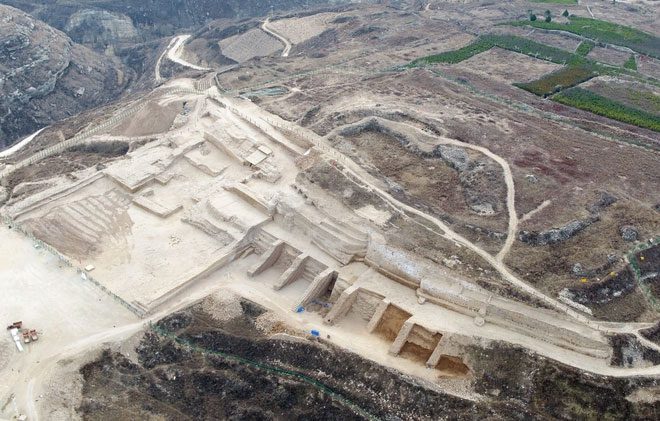A team of archaeologists has unearthed a sculpture believed to represent the face of a king at the Shimao Pyramid in Shaanxi Province, China.
Professor Shao Jing, deputy head of the archaeological team at the Shimao Pyramid, stated on August 8 that they have recently discovered several sculptures, one of which is thought to be a portrait of a king, as reported by the South China Morning Post.
The Shimao Pyramid dates back approximately 4,200 years and is located in Shenmu, Shaanxi Province. This pyramid stands over 70 meters tall, about half the height of the Giza Pyramid in Egypt, which was also constructed around the same period.
However, unlike other pyramids around the world, the Shimao “pyramid” resembles an ancient city. It covers an area of over 80,000 square meters – equivalent to 10 football fields. Archaeologists have also discovered complex structures, including gardens and fish ponds.

The architecture of the Shimao Pyramid spans over 80,000 hectares in Shaanxi Province. (Photo: South China Morning Post).
In an interview with Xinhua, Professor Shao Jing mentioned that the newly discovered sculpture features three faces, two of which have been fully excavated.
The face on the west side measures 80 cm in length and 50 cm in height, adorned with a crown – making it the largest among the sculptures found at Shimao. However, the archaeological team believes that the remaining face is the true representation of the king.
“The eastern face appears to be at the center of the sculpture and may depict the ancestral king of Shimao,” Professor Shao Jing stated.
Over the years, the archaeological team has found 70 stone sculptures at the foot of the pyramid, including human faces, animals, and mythical creatures.
Archaeologists believe that these sculptures are linked to the beliefs of the people in Shimao, and the ancient inhabitants believed that carving the images of kings or nobility would protect this palace.
In July, Professor Sun Zhouyong, head of the Shimao Pyramid archaeological team, stated that this structure predates the establishment of the Xia Dynasty (circa 2070-1600 BCE) and shares many similarities with ancient civilizations in Mohenjo-Daro (present-day Pakistan) and Mesopotamia (mostly present-day Iraq).


















































